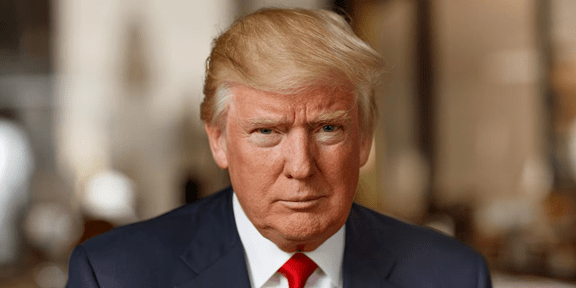On Trump and Geopolitics
In global politics, few leaders have made an impact as uniquely as Donald Trump. Now, in his second term as U.S. President, his “America First” policy continues to shape how his administration deals with the world. Instead of following grand political ideals, Trump focuses on making deals that benefit the U.S. directly.
A new nine-page document, the Interim National Defense Strategic Guidance, reported by The Washington Post, sheds light on the Pentagon’s priorities under Trump. Written by U.S. Defense Secretary Pete Hegseth and sent to Congress, the document aligns with the conservative Project 2025 plan from the Heritage Foundation. This suggests a major shift in America’s military and diplomatic strategy.
Trump’s Foreign Policy Approach
During his first term (2017–2021), Trump shook up long-standing U.S. foreign policy traditions. He pulled the U.S. out of the Paris Climate Accord, calling it bad for business, and abandoned the Iran nuclear deal, saying it was too weak. His trade war with China, triggered by heavy tariffs, disrupted global supply chains.
Trump also took an unusual approach to diplomacy. He became the first sitting U.S. president to meet North Korea’s Kim Jong-un, creating dramatic moments but achieving little in terms of results. He also pressured NATO allies to spend more on defense, causing tensions within the alliance. Throughout his presidency, Trump has consistently prioritized America’s immediate interests over global partnerships—a strategy that continues into his second term.
The latest Interim National Defense Strategic Guidance lays out Trump’s military priorities for his second term. It shifts the U.S. military’s focus to the Indo-Pacific, naming China as the biggest threat and preparing for a possible Chinese attack on Taiwan. Meanwhile, it places responsibility for handling Russia, North Korea, and Iran mostly on European allies. The U.S. is also reducing its focus on the Middle East and Africa, opting for smaller counterterrorism operations instead. Defense Secretary Pete Hegseth’s strategy emphasizes that NATO must take on a much larger share of security costs, echoing Trump’s long-standing frustration with the alliance.
A Stronger Focus on China
At the heart of Trump’s plan is a more aggressive stance in the Indo-Pacific, where China’s growing power challenges U.S. influence. By calling China the “sole pacing threat,” the strategy highlights Beijing’s economic strength (with a GDP of $18 trillion in 2024) and its rapidly expanding military, including a navy that now outnumbers U.S. ships.
A key part of the strategy is a detailed plan for how the U.S. would respond to a Chinese invasion of Taiwan. This suggests the administration is not just preparing for the possibility but is willing to take stronger military action in the region. Trump may also build on efforts from his first term, such as the Quadrilateral Security Dialogue (Quad) with Japan, India, and Australia. His second term could see the Quad evolve into a NATO-like alliance, possibly including South Korea or Vietnam, while increasing U.S. naval presence in the South China Sea—where most U.S. aircraft carrier operations were already concentrated in 2024.
The Costs of Focusing on China
Shifting military focus to the Indo-Pacific comes with challenges. Competing with China means the U.S. must spend more on advanced weapons, like hypersonic missiles, and improve its cyber defenses. Allies such as Japan—where 54,000 U.S. troops are stationed—may be pressured to take on bigger military roles, despite legal restrictions under their pacifist constitution. India’s close ties with Russia could also create tension within the Quad alliance. Meanwhile, China might respond by speeding up its Belt and Road Initiative or strengthening its military presence on artificial islands, forcing Trump to make tough decisions.
Less Focus on the Middle East and Africa
The new strategy marks a major shift from the heavy U.S. involvement in the Middle East and Africa after 9/11. Instead of long-term military campaigns, the U.S. will now focus on stopping terrorist groups that directly threaten American soil—such as al-Qaeda—rather than smaller local militias.
In Syria, where 900 U.S. troops are still stationed in 2025, this could lead to troop reductions, potentially leaving Kurdish allies vulnerable to attacks from Turkey or Russia, which controls much of Syria’s airspace. In Africa, reducing the U.S. military’s presence—including the 7,000 troops under AFRICOM—could embolden extremist groups like Boko Haram, which killed 1,500 people in 2024 alone.
By pulling back from these regions, the U.S. could save up to $50 billion a year and redirect those resources to the Indo-Pacific. However, this approach carries risks. Russia could strengthen its grip in Syria, while Iran—whose missile program reached a 2,000-kilometer range in 2024—might use the opportunity to destabilize Iraq or Yemen. The big question is whether the U.S. can keep global threats in check using counterterrorism alone, without having troops on the ground.
NATO’s Burden and Trump’s Ultimatum
Trump wants NATO to take on more responsibility for dealing with Russia, North Korea, and Iran, shifting the security burden to European allies. His defense strategy reflects his long-standing criticism that too few NATO members met their 2% GDP defense spending target—only 11 out of 30 did by 2020. Now, with Defense Secretary Pete Hegseth calling for “far greater” burden-sharing, the U.S. could reduce its 64,000 troops in Europe, putting pressure on countries like Germany (which hosts 35,000 U.S. troops) and Poland to do more.
But this strategy carries risks. Russia’s recent threats to annex more of Ukraine’s Donbas suggest Moscow could test NATO’s defenses in Eastern Europe, where U.S. forces have been a key deterrent. If European allies hesitate—France, for example, only spent 1.9% of its GDP on defense in 2024—NATO’s unity could crack, leading some to push for an independent European military. Trump’s main bargaining chip is his willingness to walk away from NATO, but pushing too hard could weaken the alliance at a time when Russia’s defense budget has soared to $120 billion in 2025.
Greenland and the Panama Canal are Strategic Gambles
Trump’s defense guidance also acknowledges risks in places like Greenland and the Panama Canal, suggesting the U.S. is willing to scale back its presence there. Greenland is highly valuable due to its massive reserves of rare earth minerals (38.6 million metric tons) and its strategic Arctic location. While Trump’s 2019 offer to buy Greenland was mocked, China’s $500 million investment proposal in 2024 showed its growing interest.
The Panama Canal, which handles 5% of global trade (worth $270 billion annually), is another vulnerable spot. A reduced U.S. presence—possibly cutting back the 2,000 troops historically stationed in Panama—could open the door for China or Russia to expand their influence in Latin America. In 2024, China’s trade with the region hit $450 billion, signaling its growing economic reach. Trump appears to be betting that these regions can wait, but rivals may not give the U.S. that luxury.
Challenges at Home and Abroad
Trump’s strategy faces serious obstacles. In the U.S., a divided Congress could make it hard to secure funding for his Indo-Pacific focus. Democrats, who gained Senate seats in 2024, may oppose military expansion, while some Republicans worry about pulling back from the Middle East. Legal battles—like those that slowed his travel ban in his first term—could also disrupt military plans. Additionally, the massive Pentagon bureaucracy, with 750,000 civilian employees, could slow down efforts to shift priorities.
Internationally, allies are uneasy. Japan’s $60 billion defense budget in 2025 pushes the limits of its pacifist policies, while NATO’s $1.3 trillion in collective spending may not be enough to make up for a reduced U.S. presence. Meanwhile, U.S. rivals see opportunities to advance. In 2025, Russian cyberattacks hit 20% of America’s critical infrastructure, and Iran reached 90% uranium enrichment in March—bringing it closer to nuclear capability. Trump’s preference for quick, high-profile victories over long-term alliances could weaken U.S. influence in the future.
Walking a Fine Line
Trump’s foreign policy, outlined in the Interim National Defense Strategic Guidance, represents a bold shift in American power. By focusing on China and the Indo-Pacific, he aims to address what he sees as the biggest geopolitical challenge of the 21st century, believing that pulling back from other regions will be worth it. However, this strategy is risky. Success depends on getting reluctant allies on board, staying ahead of aggressive rivals, and keeping domestic critics at bay. If it fails, the U.S. could find itself overstretched in Asia, losing influence in Europe, and sidelined in its own backyard. The world is watching as Trump navigates a difficult balancing act, where every move could shape the future of global power.
—————
Rajeev Ahmed
The Editor of Geopolits.com and the Author of the book titled Bengal Nexus
—————-

